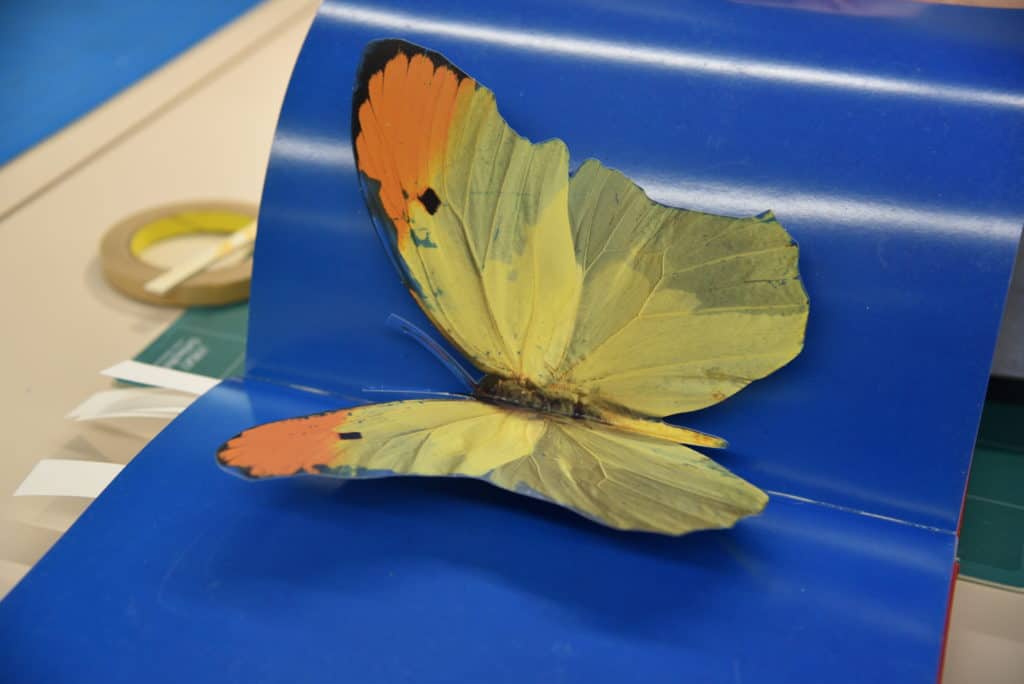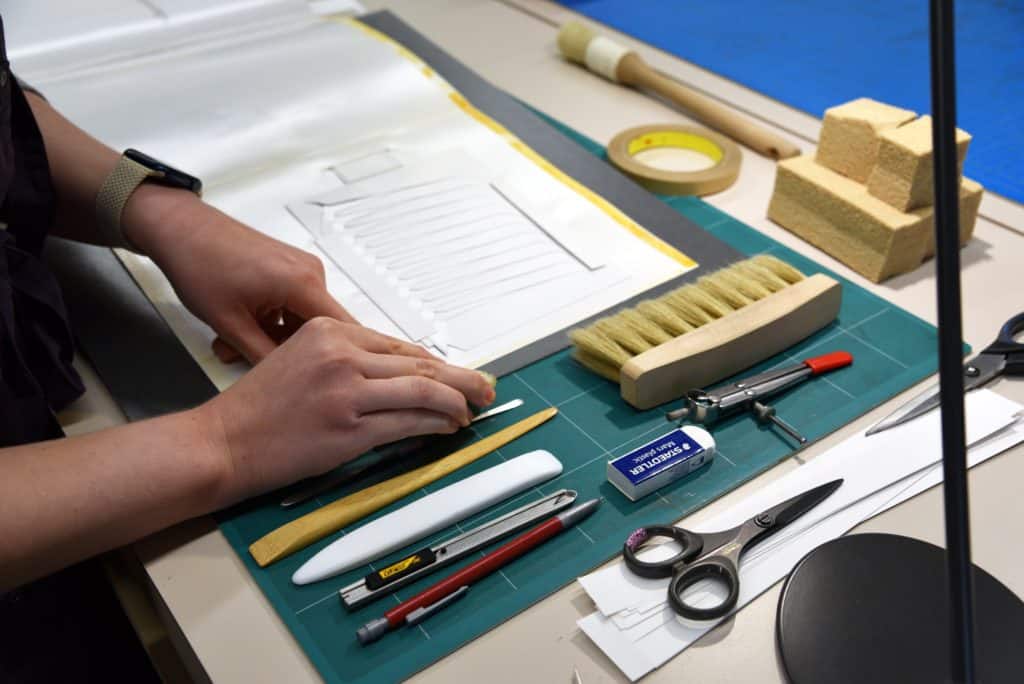Bookbinder, video game enthusiast, disco connaisseur
How did you find your way into preservation and collections care?
I was somewhat aware of library preservation while I was a grad student working in the Conservation Lab, but was more interested in becoming a conservation technician—treating one book at a time—than I was in larger-scale collections care work. Coming out of my Book Arts and Library Science degrees, I was looking for tech jobs and book arts studio manager jobs: I really wanted to work on making or repairing books with my own two hands. The pandemic hit right as I was wrapping up my MFA, so those plans were put on hold for a while. During lockdowns and work-from-home, I focused on expanding my bookbinding skills as much as I could, and I made and repaired books from my little home bindery. Then, when jobs started opening up again in 2021, I found a collections care tech position at the Library of Congress: it was a high-volume, production-style bench position that allowed me to perform repair work on tons of books and grow my bookbinding skills through a library preservation focus. That job really opened my eyes to preservation and collections care as a career pathway and steered my library interest to collection-level preservation.
I like to frame preservation work through the question: “How do I help this book become (or stay) accessible to users, researchers, and students?”
What kinds of materials are your favorite to work with?
Never in my life did I think I’d say this, but right now I’m getting a kick out of working with old newspapers. It’s true they don’t feel great to the touch, and they are generally a preservation nightmare because of their fragility (which is caused by the fact that most newsprint is inherently acidic), but I love discovering what headline events and social movements were five years or five decades ago. It feels a little like getting to look back through time.
My all-time favorite materials to work with, though, are the books in the Conservation Lab’s Bookbinding Model Collection. I got to work with that collection in grad school, and once a week I work to organize, describe, and preserve this one-of-a-kind teaching collection, which traces the history and evolution of bookbinding crafts through time and across cultures. It’s a real gem.
How do you maintain focus on your detail-oriented work?
A cup of coffee before diving into detail-oriented work is a must, and I usually pair it with a podcast episode (or two or three). I particularly love audio essays that consider the intersection of video games and art/art history or think about why certain narrative/interactive features of video games work as well as they do. On the days where the weather is particularly overcast, I turn on some old disco hits instead…it helps the coffee go further.
Any particularly fun anecdotes about the job?
As a rule of thumb, using tape on books and library materials is a big no-no. Tape generally makes paper brittle over time and is terribly challenging to remove without damaging the item it’s on, if it can be removed at all. This year I’ve been working on repairing a couple of pop-up books, and the material I am using to repair the pop-up elements is…tape! Granted, it’s very specialized and conservator-approved tape, but I’m still tickled to be using what should be an illicit technique as a valid repair.
What advice would you give to a college student about careers, libraries, or life in general?
I think the most important thing you can do for yourself as you prepare for your life outside of school is to build community. Hopefully, you’ll end up in a really good job you are excited to show up for and grow into. But even if your job is less than perfect, the thing that will carry you through those inevitable professional and personal rough patches in life are your friends and loved ones. The same people you share meals and interests and trust with are the people who will be pumped to read over a cover letter or resume for you in the future and who you’ll help debrief after that interview. I’m a firm believer that no one accomplishes anything without some degree of help and support, and that extends to job searches and building career paths.
More concretely though: keep a running document where you keep track of all your resume activities. Cultivate a hobby that has nothing to do with your work. Remember to drink water, and stop to stretch from time to time.

Glémot’s workstation and tool collection highlight the multifaceted nature of preservation and collections care work. Presevation is both an art form and a technical skill. According to Glémot, “I am most excited for those days where I get to plug away at the bench making boxes or mending tears in paper, but any task that leads me to return a book to the stacks feels like time well-spent.”
(Left: Glémot repairs a pop-up book.)
